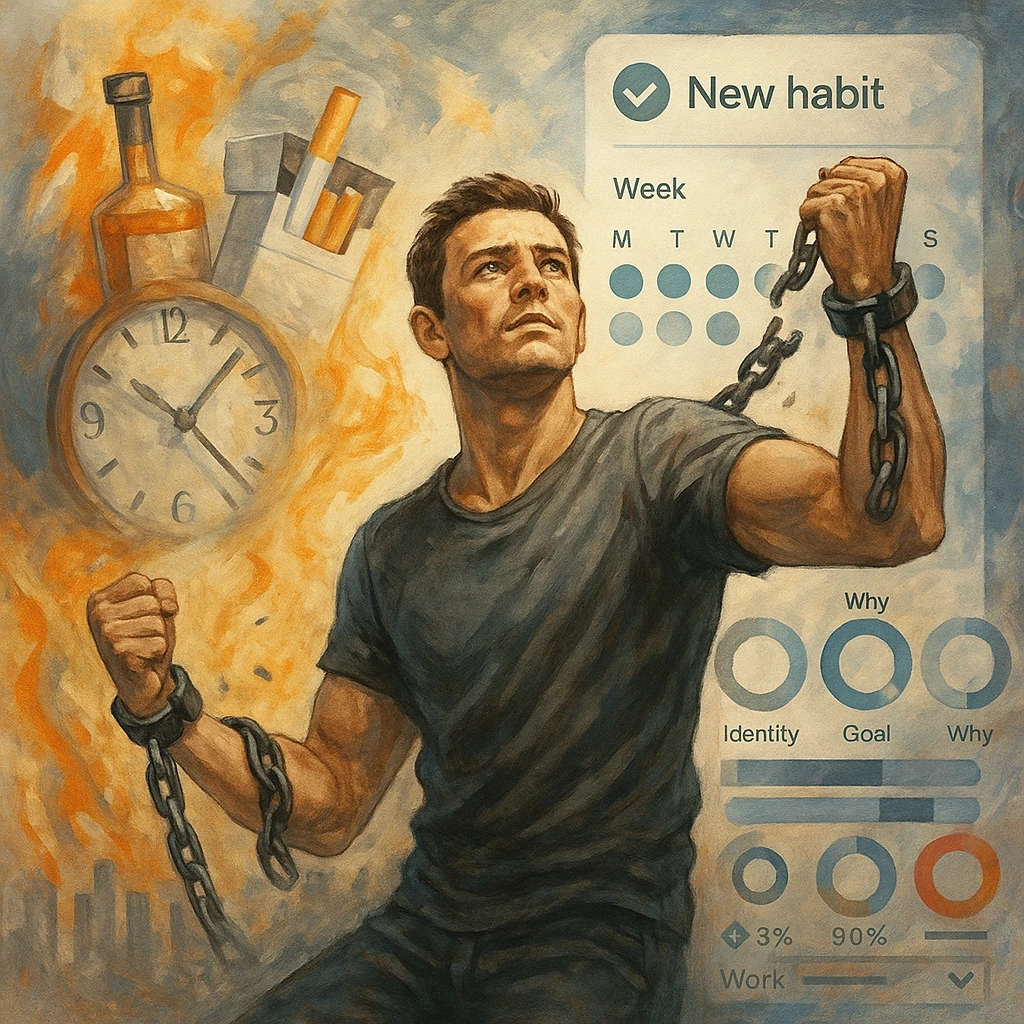This process, while seemingly straightforward, involves a profound shift in how we think about habits and their impact on our identity.
Step 1: Decide the Type of Person You Want to Be
The first step in this transformative process is to clearly define the type of person you want to become. This involves introspection and a clear understanding of your values, principles, and goals. It's not just about aspiring to achieve specific outcomes, like losing weight or getting a promotion, but rather about embracing the qualities of the person who can achieve these outcomes. For example, instead of focusing on becoming a bestselling author, concentrate on becoming a disciplined and imaginative writer. This shift from outcome-based to identity-based goals is crucial because it centers on who you inherently wish to be, setting a foundation for sustainable change.

Step 2: Prove It to Yourself with Small Wins
The second step is all about reinforcement through small, consistent actions that align with your desired identity. These actions serve as proof to yourself that you are becoming the type of person you aspire to be. Each small win is a building block, reinforcing your new identity through evidence and repetition. For instance, if you want to be seen as a thoughtful leader, make it a habit to give constructive feedback and support to your team regularly. Over time, these consistent actions accumulate, solidifying your identity both in your own eyes and in the eyes of others.
The Role of Habits in Shaping Identity
Habits play a central role in this process because they are the repeated behaviors that reinforce our identity. As we perform these habits, they become intertwined with our sense of self. The more we engage in behaviors that align with our desired identity, the more we reinforce that identity. This creates a positive feedback loop where our habits reinforce our identity, and our identity, in turn, strengthens our commitment to those habits.
Overcoming Challenges
Changing one’s identity is not without its challenges. Old habits, especially those that conflict with our new identity, can be hard to break. It requires continuous effort and mindfulness to choose actions that support the new identity. Additionally, external factors such as peer pressure or environmental cues can also hinder progress. Overcoming these challenges involves awareness, perseverance, and sometimes, changing one's environment to better support the new identity.
Practical Applications and Real-Life Examples
To illustrate the practical application of these steps, consider the example of someone who wants to become healthier. Instead of setting a vague goal to 'be healthier,' they decide to embody the identity of someone who prioritizes health. They start by incorporating small habits like choosing water over soda, taking the stairs instead of the elevator, and preparing a healthy meal each day. Each of these actions reinforces their identity as a health-conscious person.
Another example could be someone aspiring to be more environmentally conscious. They might begin by reducing plastic usage, recycling more consistently, and educating themselves about sustainable practices. Each decision and action reinforces their identity as someone who cares for the environment.
Conclusion
The process of changing your identity through habits is powerful because it harnesses the consistent nature of habitual actions to effect lasting change. It’s about more than just doing—it’s about becoming. By focusing on who you want to be and systematically reinforcing that identity through small, practical actions, you can fundamentally transform your self-perception and, consequently, your life. This method underscores the importance of small steps in achieving profound life changes and highlights how our daily choices shape our ultimate identity.